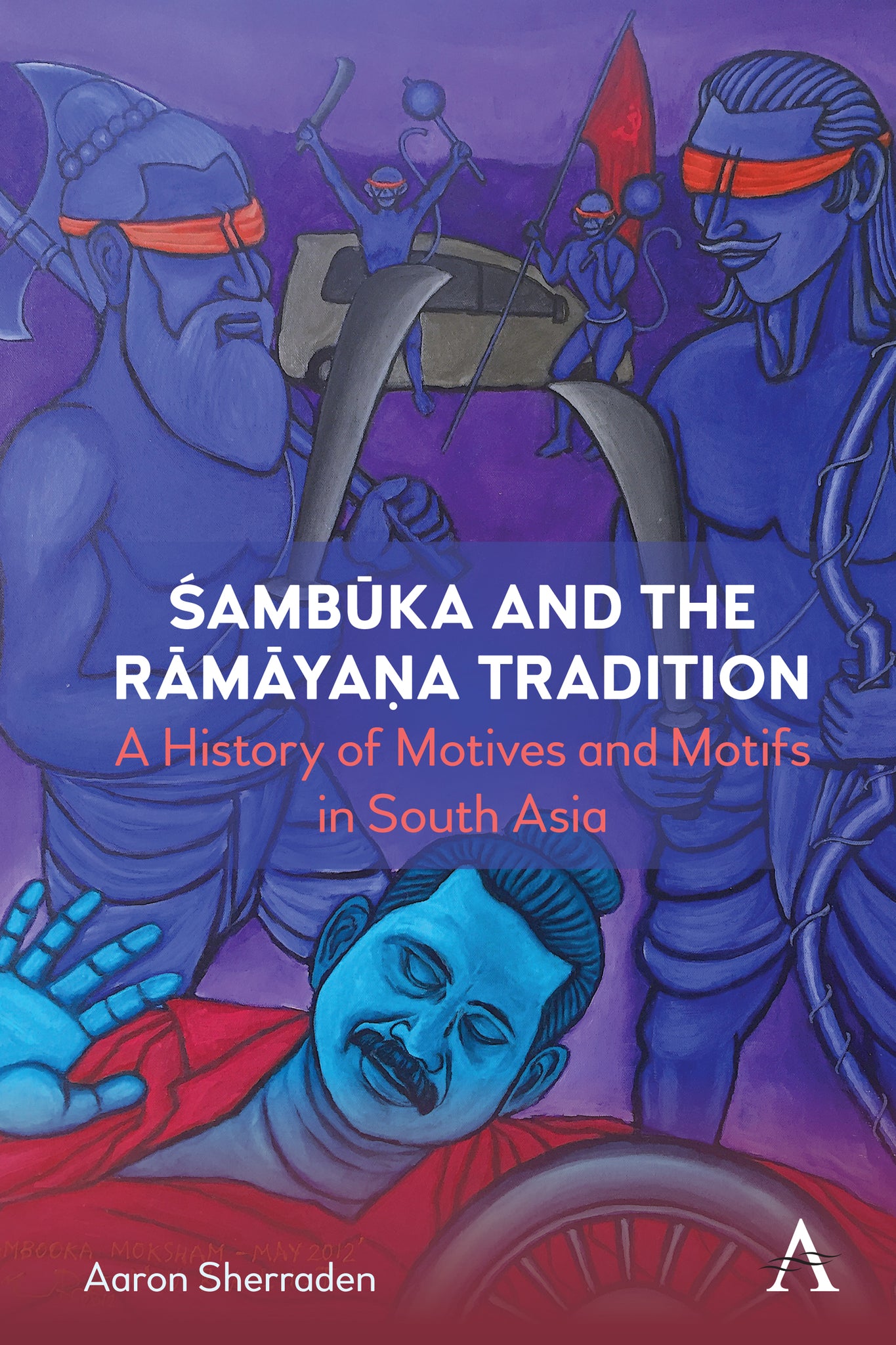We're sorry. An error has occurred
Please cancel or retry.
Śambūka and the Rāmāyaṇa Tradition

Some error occured while loading the Quick View. Please close the Quick View and try reloading the page.
Couldn't load pickup availability
- Format:
-
01 August 2023

According to Vālmīki’s Sanskrit Rāmāyaṇa (early centuries CE), Śambūka was practicing severe acts of austerity to enter heaven. In engaging in these acts as a Śūdra, Śambūka was in violation of class- and caste-based societal norms prescribed exclusively by the ruling and religious elite. Rāma, the hero of the Rāmāyaṇa epic, is dispatched to kill Śambūka, whose transgression is said to be the cause of a young Brahmin’s death. The gods rejoice upon the Śūdra’s death and restore the life of the Brahmin. Subsequent Rāmāyaṇa poets almost instantly recognized this incident as a blemish on Rāma’s character and they began problematizing this earliest version of the story. They adjusted and updated the story to suit the expectations of their audiences. The works surveyed in this study include numerous works originating in Hindu, Jain, Dalit and non-Brahmin communities while spanning the period from Śambūka’s first appearance in the Vālmīki Rāmāyaṇa through to the present day. The book follows the Śambūka episode chronologically across its entire history—approximately two millennia—to illuminate the social, religious, legal, and artistic connections that span the entire range of the Rāmāyaṇa’s influence and its place throughout various phases of Indian history and social revolution.

RELIGION / Hinduism / Sacred Writings, Criticism and exegesis of sacred texts, SOCIAL SCIENCE / Folklore & Mythology, HISTORY / Asia / South / General, Hinduism: sacred texts and revered writings, Cultural studies: customs and traditions, Asian history

“Drawing on classical and modern texts in six Indian languages as well as English and on contemporary ethnographic observation, this book presents an impressive diachronic study of a troubling, often elided, yet never wholly erased storyline within the pan-Indian Ramayana tradition. It persuasively shows not only the persistence and ubiquity of the tale of Śambūka—a low-caste man allegedly slain by King Rama in order to uphold dharma—but also its importance as a gauge of sentiments about a range of sensitive sociocultural issues, and thus offers a timely and important intervention in debates about India’s past and present.”—Philip Lutgendorf, Professor of Hindi and Modern Indian Studies, Emeritus, University of Iowa; Author: Hanuman’s Tale: The Messages of a Divine Monkey; Translator:Tulsidas: The Epic of Ram.
List of figures; Acknowledgments; Foreword: Śambūka’s Story across Time and India’s Regions; A Note on Transliteration; Abbreviations; 1. Introduction: Śambūka’s Death Toll; 2. Śambūka’s Earliest Death; 3. First Responders ; 4. The Uttararāmacaritaand Śambūka’s Purpose in Death; 5. The Accident or the Execution; 6. Śambūka Lives on Ramtek Hill; 7. The Anti-Caste Revolutionary; 8.Śambūka in the Twenty-First Century; 9. Conclusion: Śambūka and the Rāmāyaṇa Tradition; Bibliography; Index



